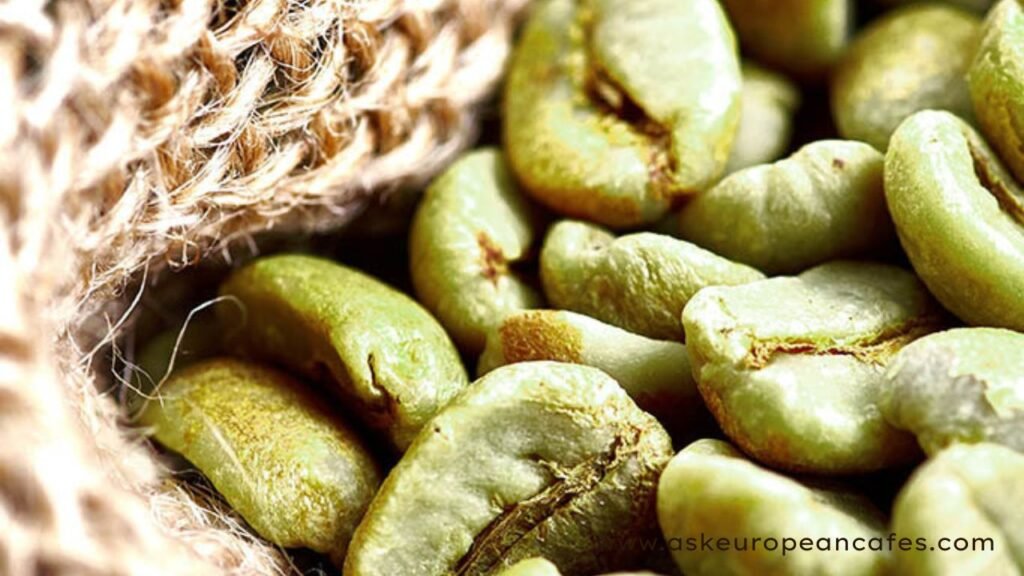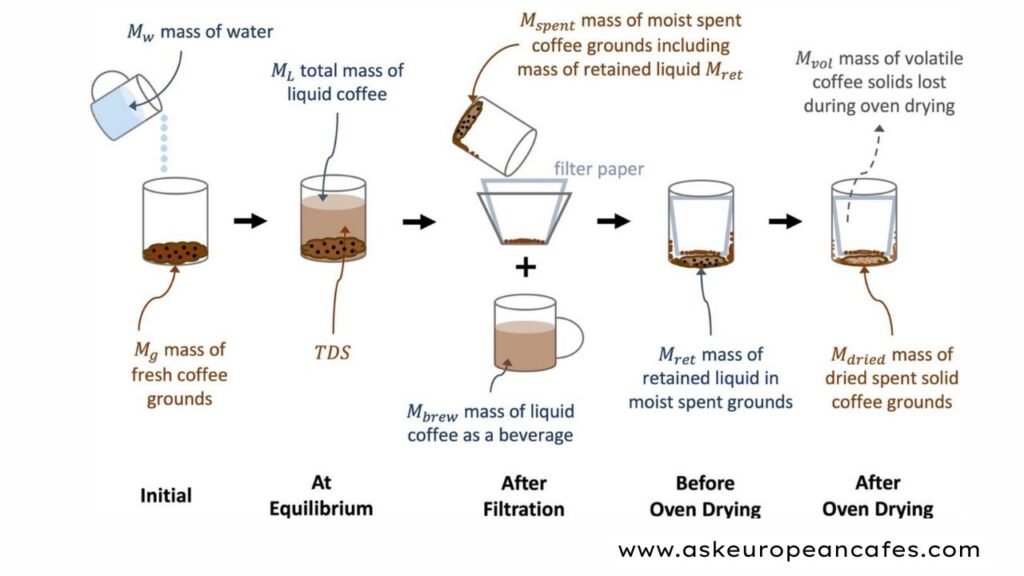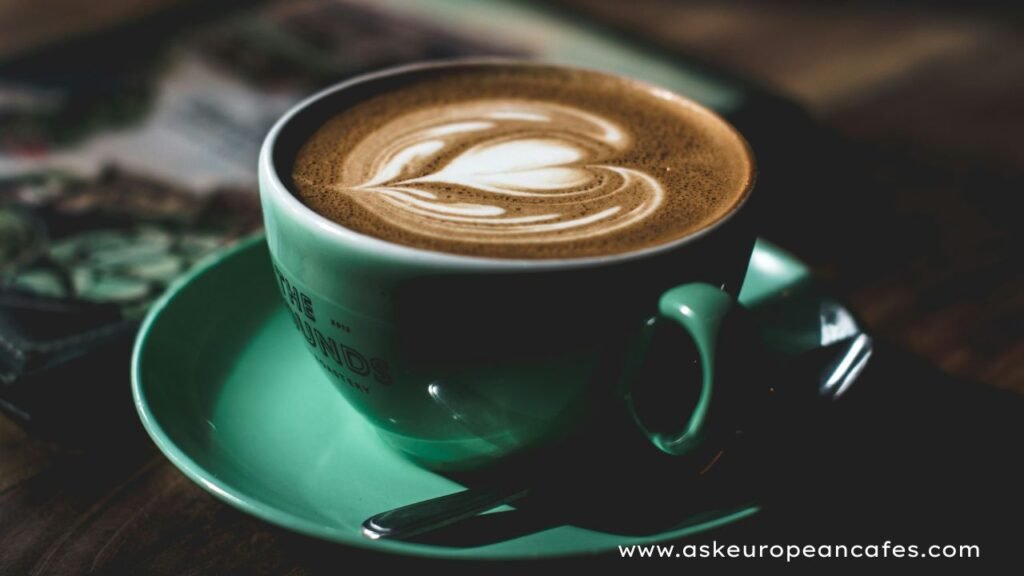Does light Or Dark Roast Have More Caffeine
When I first started drinking coffee, I always thought the darker the roast the stronger the caffeine. It made sense to me at the time.
A deep bold flavor must mean it’s packed with more power right? But after many cups of coffee lots of reading and chats with other coffee lovers, I learned that things are not that simple. Let’s explore this together in a simple way just like two friends talking over a cup of coffee.
Does light Or Dark Roast Have More Caffeine?
Importance of Knowing About Dark Roast
There are three main types of coffee roasts: light, medium and dark. Each one has a Innovative flavor, aroma, and even caffeine level.
Light Roast: This type is roasted for a shorter time. The beans are light brown and usually have a more acidic flavor. light roast often has more caffeine than dark roast. Since it is roasted for less time. the caffeine doesn’t burn away.
Medium Roast: This is the most common roast. The beans are medium brown and the flavor is more balanced. It has a bit less caffeine than light roast but still a good amount. I usually enjoy medium roast in the afternoon.
Dark Roast: This roast has the boldest flavor. The beans are dark brown almost black. The taste is smoky and sometimes even bitter. Many people think dark roast has more caffeine because of the strong taste. But in fact it usually has slightly less caffeine than light roast. The longer roasting time reduces the caffeine content a bit.
Does a Dark Roast Have More Caffeine?

The short answer is: no, not really dark roast doesn’t have significantly more caffeine than light roast. In fact, it usually has slightly less. But the difference is so small that it doesn’t matter much unless you’re being really Exact.
This is a question I used to wonder about a lot especially when I’d grab a bold dark roast in the morning thinking it would give me a stronger kick than a lighter one.
But here’s the truth: the roasting process actually causes a tiny decrease in caffeine content. The longer beans are roasted the more heat they absorb and while caffeine is fairly stable some of it breaks down during roasting. Technically dark roast beans have a little less caffeine than light roast beans.
But here’s where it gets more interesting it also depends on how you measure your coffee.
- If you measure by weight (for example, using a kitchen scale and weighing out 20 grams of beans) then light roast will give you more caffeine. That’s because light roast beans are Thicker they’ve lost less moisture during roasting.
- But if you measure by volume (like using a scoop or a spoon) dark roast might seem to give you more. That’s because dark roast beans puff up more during roasting becoming less dense. A scoop of dark roast is lighter than a scoop of light roast so you’re actually using more beans by volume when you scoop the darker roast.
I found this out when I started grinding my own coffee at home and began paying closer attention to my brew ratios. I realized that if I wanted consistency in both flavor and caffeine, weighing the beans was the best way to go. Scooping by eye just led to random results sometimes a strong cup, sometimes a weak one.
So, while the type of roast might slightly affect caffeine, it’s your measuring method that makes the real difference. If you’re chasing that caffeine kick, go by weight not scoops.
Dark Roast Black Coffee – Nutritional Information (per 240 ml / 8 oz cup)
| Nutrient | Amount | % Daily Value (UK) |
|---|---|---|
| Energy | 2 kcal | 0% |
| Fat | 0 g | 0% |
| – Saturates | 0 g | 0% |
| Carbohydrates | 0 g | 0% |
| – Sugars | 0 g | 0% |
| Fibre | 0 g | – |
| Protein | 0.3 g | <1% |
| Salt | 0 g | 0% |
| Caffeine | ~95 mg | (Varies by tolerance) |
Notes:
- Caffeine content may vary depending on the beans, brewing method, and strength of the coffee.
- This chart assumes no milk, no sugar, and no additives.
- Nutritional values are approximate and based on general UK nutrition labelling standards.
Bean Origin
The country or region that grows your coffee shapes not just its flavor but also its caffeine content. I never paid much attention to this until I started exploring different kinds of coffee and trust me, each cup offers a world of difference.
You’ll usually come across two main types of coffee beans: Robusta and Arabica. Farmers typically grow Robusta beans in countries like Vietnam, Brazil and parts of Africa.
Growers cultivate Arabica beans more often in Ethiopia, Colombia and across Central America. The key difference? Robusta beans naturally contain almost twice the caffeine of Arabica beans.
So, when you sip a strong Vietnamese Robusta, expect a serious caffeine boost. These beans deliver a bolder, sometimes slightly bitter taste but they pack a punch perfect if you need a powerful wake-up call.
I once drank a cup of pure Robusta coffee while visiting Goa. A small roadside café served it nothing fancy but the owner proudly told me he brewed it with strong local Robusta beans. I took one sip and wow.
That cup didn’t just wake me up; it made me feel like I could sprint down the beach and back without stopping. The caffeine hit perfectly and I felt superhuman for a moment!
Since that day, I’ve started paying more attention to where my coffee comes from. It amazes me how a bean from one region can completely transform your coffee experience not just in flavor but in the energy it gives you afterward.
Is the Coffee Bean Fresh?

Freshly roasted coffee beans make all the difference trust me. Opening a new bag of beans hits you with a rich, warm almost chocolatey aroma.
That smell shows the coffee is still full of life. From the moment roasters finish roasting, the beans start releasing gases and oils that carry all the delicious flavors and scents we love.
As days and weeks pass, the beans slowly lose their freshness. The oils dry up the aroma weakens and the taste becomes dull. I learned this the hard way. Once, I bought a beautiful-looking bag of beans from a small local shop. The smell was incredibly deep, nutty and inviting.
I was so excited to try it! But life got busy, and I left the bag unopened for over a month. When I finally brewed it, the coffee tasted… flat. It lacked depth and excitement just a weak cup that didn’t live up to the smell. Honestly it disappointed me.
That’s when I started paying attention to something I had overlooked before: the roast date. Most good roasters print the date they roasted the beans right on the bag. It’s not just for show it really matters. Ideally, you should use your beans within 2 to 4 weeks of the roast date. That’s when they offer the best balance of flavor, aroma, and body.
If you want to enjoy the true character of your coffee whether it’s fruity Ethiopian, smooth Colombian, or bold Indian freshness is key. Once you taste the difference you won’t want to go back to old beans. So next time you buy coffee, check the roast date. Your taste buds will thank you!
Brewing Methods Matter

How you brew your coffee changes how much caffeine you get. Let’s look at a few methods:
1. Espresso:
- Strong and rich, but served in small amounts.
- One shot has about 63 mg of caffeine.
- My husband loves his morning espresso it’s fast and gives him the quick kick he needs.
2. Drip Coffee (Filter Coffee):
- Brewed slowly with hot water dripping through ground coffee.
- One cup has around 95 mg of caffeine.
- I use this method most mornings. It’s smooth and perfect with breakfast.
3. French Press:
- Soaking ground coffee in hot water for a few minutes, then pressing it.
- Strong flavor and high caffeine.
- Great for weekends when I have more time.
4. Cold Brew:
- Coffee brewed with cold water for many hours.
- Very high in caffeine.
- I enjoy cold brew during summer. It’s refreshing and keeps me awake all day!
Why Does Caffeine Matter to You?
Everyone has a different reason to care about caffeine. Some want more of it to stay awake. Others want less to avoid anxiety or sleep problems.
I like just enough caffeine to feel alert and happy not jittery. If I have too much, I get shaky and can’t sleep at night. That’s why I usually stick to medium roast in the afternoon and avoid coffee after 4 p.m.
Do You Want More or Less Caffeine?
If you want more caffeine:
- Choose light roast.
- Go for Robusta beans.
- Try cold brew or French press.
If you want less caffeine:
- Choose dark roast.
- Stick with Arabica beans.
- Try smaller serving sizes, like a single espresso.
Is Caffeine Upsetting Your Stomach?
Some people feel stomach pain or acidity after drinking coffee. This could be because:
- The coffee is too strong.
- It’s drunk on an empty stomach.
- It’s very acidic (like some light roasts).
If this happens to you:
- Try dark roast—it’s less acidic.
- Eat something before drinking coffee.
- Avoid cold brew, which can be strong.
I had stomach trouble once when I drank cold brew on an empty stomach. Now, I always eat a banana or some toast before my morning cup.
Is Caffeine Bad for You?
Caffeine is not bad in small to moderate amounts. In fact, it has some health benefits:
1. Boosts Energy:
- Helps you feel awake and alert.
2. Improves Focus:
- Makes it easier to concentrate.
3. Burns Fat:
- Speeds up metabolism slightly.
4. Lowers Risk of Some Diseases:
- Studies show coffee drinkers have a lower risk of Parkinson’s, Alzheimer’s, and Type 2 diabetes.
Of course, too much caffeine can be harmful. It may cause:
- Anxiety
- Insomnia
- Rapid heartbeat
- Digestive problems
If you feel these symptoms, try cutting down slowly. Don’t quit all at once you might get headaches or feel tired.
The Joy of Coffee

I hold the comforting warmth of a cup in my hands while the rich aroma wraps around the room like a blanket.
Then came those college nights. Facing never-ending assignments, I’d hunch over my laptop at 2 a.m., eyes heavy and brain tired but one strong cup of coffee would bring me back to life. It wasn’t just caffeine; it sparked motivation in my mug.
What I love most now is exploring flavors. Trying beans from different corners of the world feels like a mini adventure. I sipped Ethiopian coffee it surprised me with fruity, almost floral notes that made me pause and smile.
Colombian coffee feels like an old friend smooth, nutty and familiar. And Indian Monsooned Malabar? It’s wild and earthy, with a bold flavor like a monsoon storm.
Simple Brewing Tips
Here are some easy tips to make great coffee at home:
1. Use fresh beans.
- Buy small amounts and use them quickly.
2. Grind just before brewing.
- Coffee loses flavor after grinding.
3. Use clean water.
- Water makes up most of your coffee. If it tastes bad, so will your coffee.
4. Measure your coffee.
- Use about 2 tablespoons of ground coffee for every 6 ounces of water.
5. Don’t overheat the water.
- Keep water between 90-96°C (195-205°F).
6. Clean your equipment.
- Old coffee oils can make your brew taste bitter.
Recommended Daily Intake of Dark Roast
In the UK, there’s no official daily limit on how much coffee you can drink, but the NHS recommends limiting your caffeine intake to no more than 400 mg per day for most healthy adults. That’s roughly 3 to 4 cups of dark roast coffee, depending on how strong you brew it.
| Number of Cups | Estimated Caffeine (per cup ~240 ml) | Total Caffeine |
|---|---|---|
| 1 cup | ~95 mg | Safe |
| 2 cups | ~190 mg | Safe |
| 3 cups | ~285 mg | Still safe |
| 4 cups | ~380 mg | Close to limit |
| 5+ cups | ~475+ mg | May exceed limit |
Notes:
- Pregnant or breastfeeding? The NHS recommends keeping caffeine to under 200 mg a day—that’s about 1–2 cups of dark roast.
- People sensitive to caffeine may feel jittery or get sleep disturbances even with lower amounts.
- These numbers apply to plain black coffee. Adding espresso shots, energy drinks, or tea will increase your total caffeine intake.
Types of Dark Roast Coffee
French Roast
Very dark and smoky taste
Strong and bold flavor
Italian Roast
Extra dark and bitter
Often used for espresso
Espresso Roast
Rich and deep flavor
Slightly sweet
Continental Roast
Smoky and intense
Popular in Europe
Vienna Roast
Not as dark as others
Smooth with a little sweetness
Spanish Roast
Very strong and almost burnt
Rare and very bold
Conclusion
So, does a dark roast have more caffeine? No. In fact, light roast usually has slightly more. But the real answer depends on many things: your beans, your brew, your cup size, and even your body.
Coffee is personal. It’s okay to try different roasts and methods until you find what makes you feel good. Some days, I want a strong Robusta cold brew to power through work. Other days, a mild medium roast with milk feels just right. Whatever you choose, enjoy every sip. Let coffee be a friend, a comfort, and a little boost in your day.
FAQs
Q1: Does dark roast coffee have more caffeine?
Not really! Dark roast coffee usually has slightly less caffeine than light roast coffee, because the roasting process burns off a bit of the caffeine.
Q2: What does dark roast coffee taste like?
It often tastes bold, rich, and slightly bitter. You might notice flavors like chocolate, nuts, or even a smoky hint!
Q3: Is dark roast stronger than light roast?
In flavor, yes—it tastes stronger and bolder. But in caffeine, light roast usually has a bit more.
Q4: Can I use dark roast coffee for espresso?
Yes! Dark roast coffee is often used for espresso because of its deep, rich flavor.
Q5: Is dark roast coffee more acidic?
No, Darker roasts are slightly less acidic than lighter roasts, which is good if you have a sensitive stomach.
Q6: How should I brew dark roast coffee?
You can brew it any way you like—drip, French press, espresso, or pour-over. Just make sure not to over-extract, or it might taste bitter.
Q7: Why is it called a “dark” roast?
Because the beans look very dark after roasting. They’re almost chocolate brown or even black.
Q8: Does dark roast coffee have oil on the beans?
Yes, often! The longer roasting brings oils to the surface of the beans, which can make them look shiny.
Q9: Is dark roast coffee good for beginners?
If you like bold, strong flavors, you might love it! But if you’re new to coffee, try both light and dark roasts to see which one you like more.


